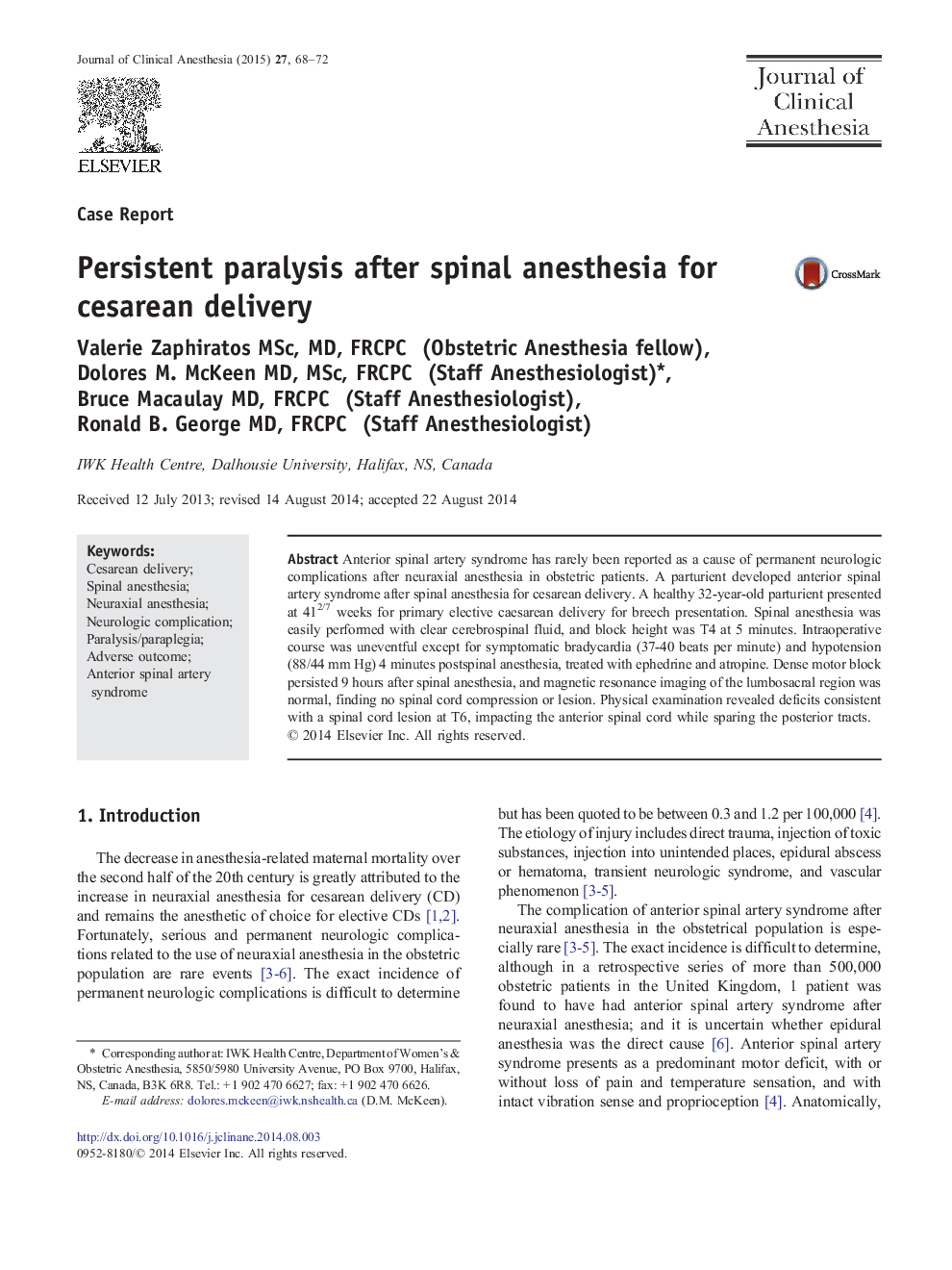| Article ID | Journal | Published Year | Pages | File Type |
|---|---|---|---|---|
| 2762255 | Journal of Clinical Anesthesia | 2015 | 5 Pages |
•Anterior spinal artery syndrome has rarely been reported as a cause of permanent neurologic complications after neuraxial anesthesia in obstetric patients•A 32-year-old woman developed persistent neurologic findings consistent with anterior spinal artery syndrome after spinal anesthesia for a primary elective cesarean delivery•The exact etiology cannot be confirmed in this present case, but multiple etiologies are suggested
Anterior spinal artery syndrome has rarely been reported as a cause of permanent neurologic complications after neuraxial anesthesia in obstetric patients. A parturient developed anterior spinal artery syndrome after spinal anesthesia for cesarean delivery. A healthy 32-year-old parturient presented at 412/7 weeks for primary elective caesarean delivery for breech presentation. Spinal anesthesia was easily performed with clear cerebrospinal fluid, and block height was T4 at 5 minutes. Intraoperative course was uneventful except for symptomatic bradycardia (37-40 beats per minute) and hypotension (88/44 mm Hg) 4 minutes postspinal anesthesia, treated with ephedrine and atropine. Dense motor block persisted 9 hours after spinal anesthesia, and magnetic resonance imaging of the lumbosacral region was normal, finding no spinal cord compression or lesion. Physical examination revealed deficits consistent with a spinal cord lesion at T6, impacting the anterior spinal cord while sparing the posterior tracts.
